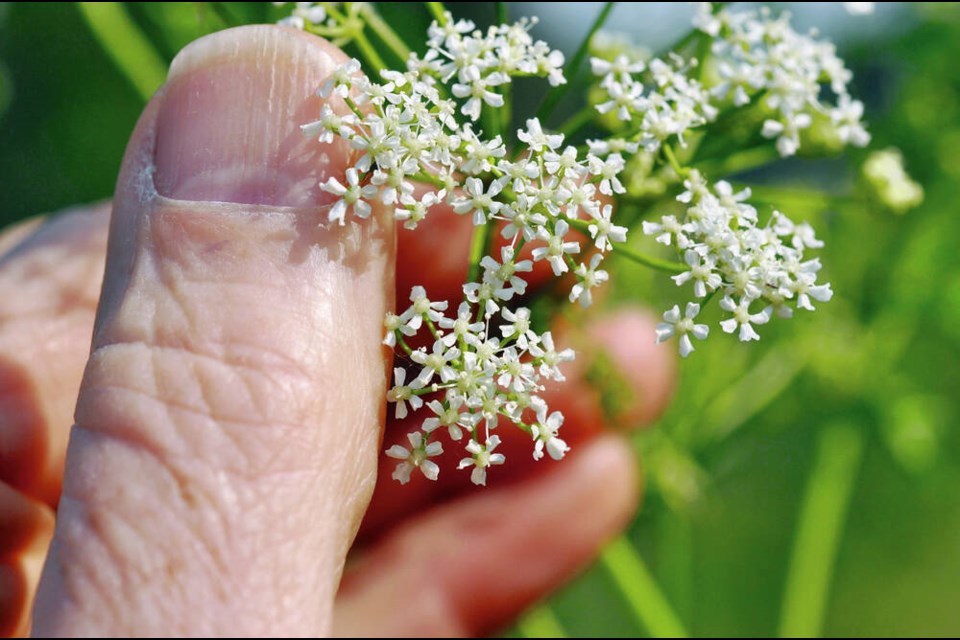A child who had to be hospitalized after ingesting poison hemlock at a Langford elementary school last week had mistaken it for an edible plant, says the school district.
Sooke School District spokesperson Kristen McGillivray said the incident last Wednesday involved a child who was in an after-school program at Crystal View Elementary operated by a third party.
The poison hemlock was in the school’s dormant gardens, said McGillivray, adding all plants, along with the soil, were removed the morning after the incident.
She said further soil replacement was completed on Monday, and the child has since returned to school.
Poison hemlock has been observed on the periphery of six other Sooke School District schools, she said — Ecole Poirier, Dunsmuir, Journey, Centre Mountain Lellum and Belmont.
“In lots of places, those peripheries are shared fence lines with other properties, so we can’t just go in and rip up the plants.”
The school district usually tackles hemlock in the spring as part of its integrated pest management plan, but has been expediting its removal efforts as the climate warms, McGillivray said.
Ken Marr, curator of botany at the Royal B.C. Museum, said it’s important for people to learn how to identify poison hemlock, which he called “one of the world’s most poisonous plants.”
Nerve toxin from the plant prevents muscles from working and ultimately leads to death by suffocation if it’s ingested in sufficient quantities, he said.
HOW TO IDENTIFY POISON HEMLOCK
Poison hemlock can grow to five or six feet but can be easily mistaken for carrots or parsley leaves when young. One easy way to spot hemlock is to see whether the plant has any purple on it, Marr said. “Those purple splotches on the stem are just unmistakable.”
Poison hemlock is found all across the capital region. Unrelated to the hemlock tree, the poison hemlock came from overseas to North America more than a century ago.
Marr said the invasive plant can be found in abundance along Langford’s Veterans Memorial Parkway, at a soil depot in Colwood’s Royal Bay neighbourhood, at the intersection of the Lochside and Galloping Goose trails, and at the turnoff leading to Elk and Beaver lakes.
The Capital Regional District classifies poison hemlock as a priority invasive species that can cause human health risks.
The district says it should not be composted after it is removed, as the plant’s flowers can still create viable seeds.
Disposal of poison hemlock can be made at the Hartland Landfill in garbage bags with a clear “invasive species” label on them.
Anyone who finds a cluster of more than 25 poison hemlock plants is asked to report it to the CRD at 250-360-3302 or at [email protected].



